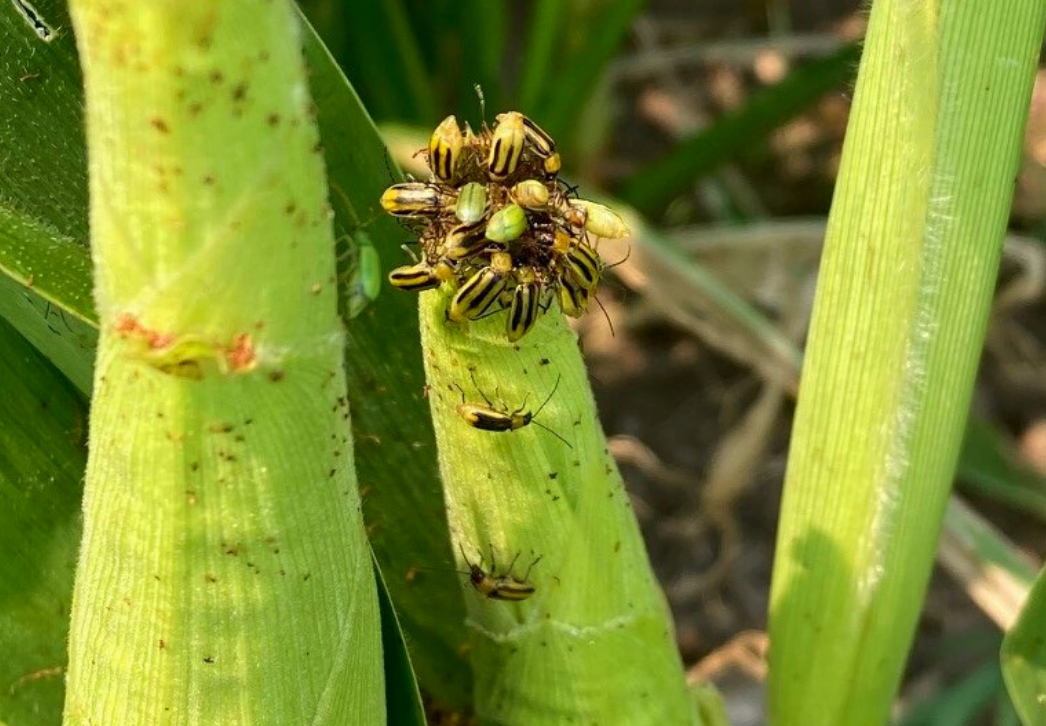|
|
A comfortable weather pattern featuring crisp nights and mild days prevailed in Wisconsin this week. Temperatures were seasonable for mid-August, with highs mainly in the 70s and 80s and overnight lows ranging from the 40s to mid-60s. Aside from scattered showers and storms August 13-14, conditions were mostly dry and favorable for harvesting fourth-crop alfalfa, small gains and vegetables. Field crop development is currently advancing 2-3 days ahead of the 5-year average despite spring planting delays, though progress remains about a week behind last year’s pace. Contrary to the trend across much of the Midwest, Wisconsin farmers reported a slight improvement in crop condition ratings following the recent rains. An estimated 78% of the state’s corn acreage and 77% of soybeans are in good to excellent condition as of August 15, an increase of 2-3 percentage points from the previous week. The 2022 apple crop has also improved with the late summer precipitation and most growers are anticipating a productive harvest this season.
__________________________________
  Corn rootworm beetles | K. Hamilton DATCP
 
|
|
DATCP’s 2022 corn rootworm beetle survey continued this week. Early results indicate beetle pressure is generally high across southwest and south-central Wisconsin for the third consecutive year. Surveys in the southwest district found an average of 1.3 beetles per plant, a decrease from 1.7 beetles per plant in 2021 but still well above the economic threshold of 0.75 beetle per plant. Similarly, the average recorded for the south-central district was also high at 1.2 beetles per plant.
In contrast, beetle pressure in the central and northeast regions is markedly lower than in the south. The 2022 averages recorded for these two districts were 0.1 and 0.4 beetle per plant, respectively. In 2021, the survey averages were comparable at 0.2 and 0.3 per plant.
Sampling has been completed in 142 of the expected 229 fields and will be finalized by the end of the month. The abundance of rootworm beetles in southern Wisconsin again this season suggests a higher risk for larval root damage to fields replanted to corn in 2023. Continuous corn in at-risk areas should be scouted in the next two weeks to evaluate both adult rootworm pressure and the performance of Bt trait packages. |
|
 __________________________________
|
|
|
Western bean cutworm larva | K. Hamilton DATCP
 
|
|
According to trapping survey data collected at 36 sites since mid-June, the 2022 western bean cutworm moth flight has been larger than in past years. DATCP’s monitoring network has captured a state total of 4,739 moths, or an average of 132 moths per trap as of August 18. This average surpasses the previous record of 5,607 moths in 48 traps (117 moths per trap) collected last season and is the highest in the 18-year history of western bean cutworm monitoring in Wisconsin. Prior to 2021-2022, the record high catch was 10,807 moths in 2010 (79 moths per trap average). The lowest count on record was 521 moths in 2014 (5 moths per trap average).
Although moths are still appearing in survey traps, numbers have decreased to low levels at all but one Marinette County site, which captured an anomalous 144 moths. Counts at the other 35 monitoring sites fell below 17 per trap for the week. The western bean cutworm flight is expected to subside by late August. Traps may be removed after August 24. |
|
 __________________________________
|
|
|
|